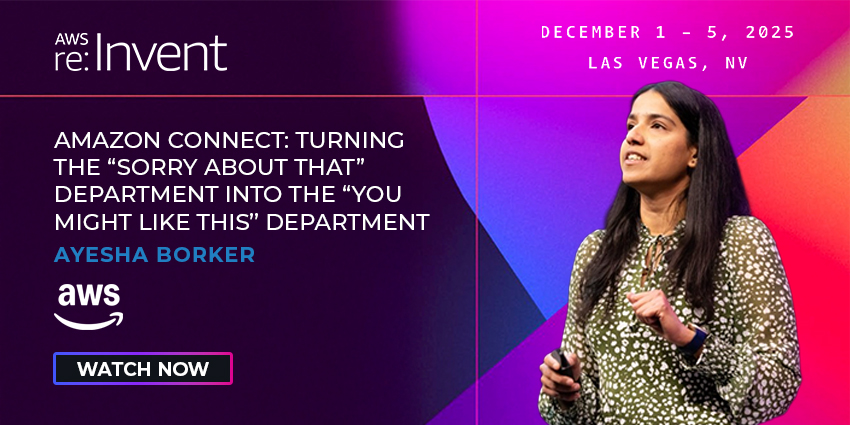In today’s customer experience landscape, automation is everywhere.
From chatbots to voice assistants, AI is increasingly handling interactions that were once the domain of human agents.
The promise is clear: faster response times, 24/7 availability, and reduced operational costs. Yet many enterprises are discovering that efficiency alone doesn’t equate to effective service.
Customers still crave understanding, context, and emotional intelligence – qualities many automated systems struggle to deliver. When AI fails to grasp nuance or respond empathetically, frustration quickly builds, and loyalty suffers.
“More often than not, people come in, implement this technology, and forget about it. When they do this, they’re losing the human touch and the human element of how agents have traditionally interacted with customers,” says Sahil Rekhi, CRO of Graia.
This challenge – often referred to as the empathy gap – spans industries and geographies.
Legacy AI deployments, rigid workflows, and rule-based bots can leave both customers and agents dissatisfied.
For enterprises with complex operations and high-value clients, the stakes are especially high: missed opportunities, frustrated customers, and eroded trust can all have a direct business impact.
As CX leaders look ahead, a new question is emerging: how can AI scale efficiency without sacrificing the human touch?
Empathic AI is emerging as a potential answer, bridging the gap between automation and meaningful human connection.
Against this backdrop, Graia has entered the market with a clear mission: to build AI that doesn’t just act fast, but acts thoughtfully, supporting agents and enhancing customer interactions without losing sight of the human element.
From Cost Optimization to Emotional Intelligence
When generative AI burst into the mainstream in late 2022, many organizations raced to automate as quickly as possible.
The initial pitch was simple: reduce support costs, speed up resolution times, and lighten the load on human agents.
“Ever since ChatGPT came onto the market, AI-driven automation and cost optimization have become buzzwords,” Rekhi reflects.
“Everybody wants to use GenAI technology to create content, drive summarization, automate customer queries… and that’s probably the area for the biggest spend we see.”
But what seemed like a silver bullet soon exposed its limits. Countless deployments relied on static workflows and brittle logic, producing interactions that were efficient but emotionally flat.
Rekhi explains how too many businesses underestimated the importance of the human touch.
“You’re missing the meaningful CSAT outputs, the NPS uplift, the loyalty. That’s where empathy needs to come into everything we do with this technology,” he said.
While this may have been overlooked initially, there have been plenty of cautionary tales since the 2022 GenAI boom.
Klarna, one of the highest-profile adopters of automation, dramatically reduced its contact center headcount – only to reverse course when customer experience began to suffer, as Rekhi explained:
“They decided to get rid of 3,000 agents and then thought, actually, no, people still appreciate the value of talking to people.
“At the end of the day, people buy from people.”
While Klarna may be one of the more renowned examples of AI backtracking, it is far from the only company.
Many CX leaders are moving beyond binary cost-saving models toward empathic AI strategies that can scale without losing the human layer.
Enter Graia: Building Empathy into the Framework
While the name may be new, Graia draws on the combined heritage of Bulb Technologies, Geomant, and Buzzeasy – three established players in CX technology.
Graia is the world’s first Agentic Xperience platform, combining artificial intelligence with emotional intelligence to create experiences that are both autonomous and deeply human.
Built on 25 years of customer engagement expertise, Graia unifies AI and empathy into a single engine that powers every customer interaction, rather than treating them as separate concerns like traditional contact center solutions.
What sets Graia apart is its decision to anchor its platform in empathy, ethics, inclusivity, and compliance.
It’s not simply layering ‘emotional’ language onto existing bots but rethinking how AI behaves in real conversations.
For Rekhi, Graia’s goal is not to create technology that is “out there just to replace the human capital.
“We want to create customer experiences that are transformative in the way both technology and humans can work together to drive the right outcomes.”
Empathy in Action: How the Platform Works
A key part of Graia’s approach is its empathy index score, which was developed by psychologists.
Rekhi describes this metric as the “overarching goal you want to achieve for every customer.”
When the platform is deployed, each interaction receives a baseline empathy score. Graia then uses adaptive AI to guide interactions toward a more empathetic outcome, whether through tone, timing, escalation, or language adjustments.
But empathy isn’t dictated solely by the machine.
“We give our clients control so they can set up six or seven different parameters or traits to dictate how empathy needs to come out,” Rekhi explains.
“Listening skills, responsive skills, language, detail, even where the pauses need to be in the interaction.”
This combination of structure and flexibility is particularly valuable in regulated industries.
By baking in ethical and compliance guardrails, Graia enables enterprises to scale empathetic experiences confidently and consistently.
Rethinking ROI: Beyond Cost Reduction
For Rekhi, empathy isn’t just an aspirational value; it’s a business strategy.
While many companies often view AI as purely a means to optimize costs, Rekhi argues that “if AI is deployed correctly – and AI through empathy is deployed correctly – you can actually drive revenue uplift and feed your growth ambitions.”
His advice to CX leaders is pointed:
- Look at ROI Holistically: Cost optimization is only part of the story. Empathy drives loyalty, retention, and revenue.”
- Redesign the Process: Don’t just automate your current workflows; focus on the outcomes you want for customers.
- Get the Data Right: Empathy works best when the underlying data enables informed, contextual responses.
Empathy as a Strategic Differentiator
In a nutshell, empathic AI is about ensuring automation works with people, not against them.
For large enterprises navigating both rising customer expectations and operational pressures, that could prove to be a decisive edge, as Rekhi explained:
“We believe empathy is a great differentiator for us in the market. And the way we implement it is going to extend that even further.”
As the CX industry moves into its next chapter, the most successful organizations won’t just deploy smarter bots; they’ll build experiences that feel genuinely human.
When deployed correctly, empathic AI can be a powerful strategy that might just define the future of customer service.
For more information about Graia and its emphathetic approach to AI in the customer service space, visit the website today.







